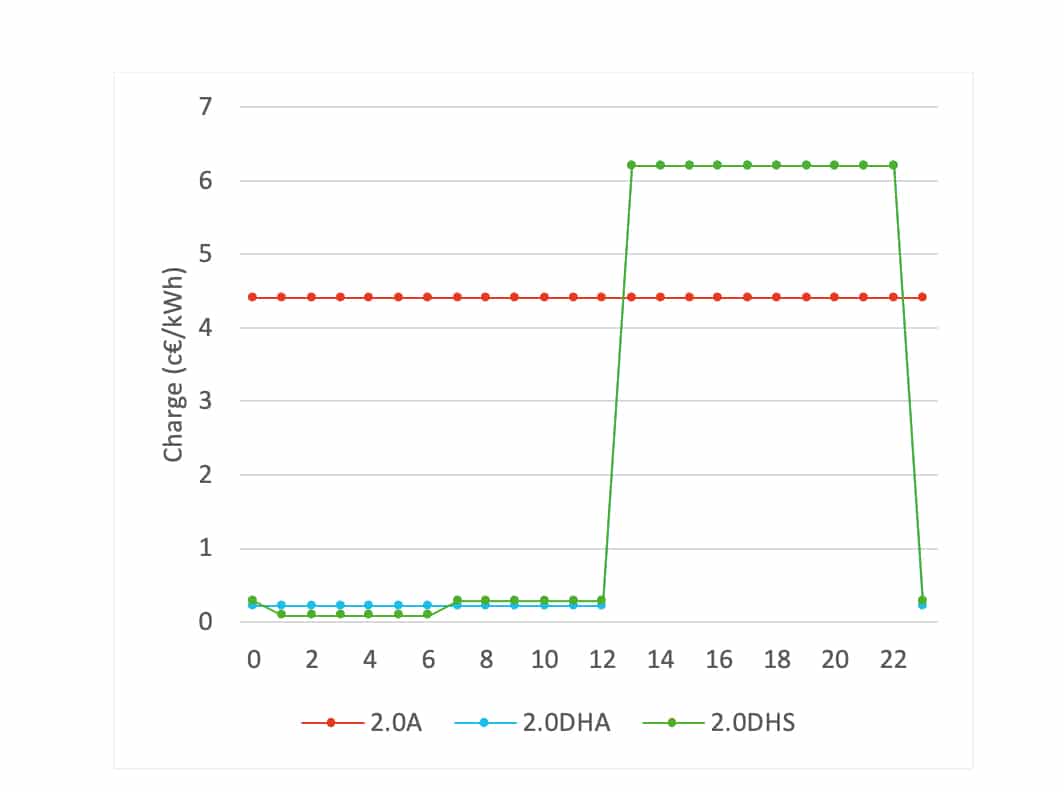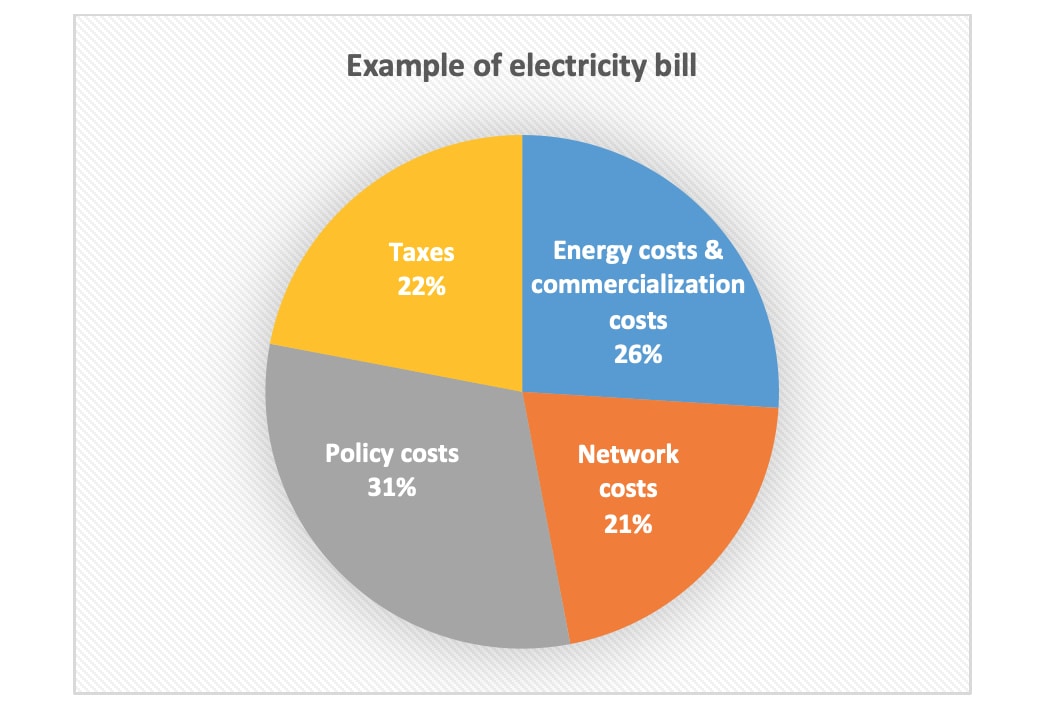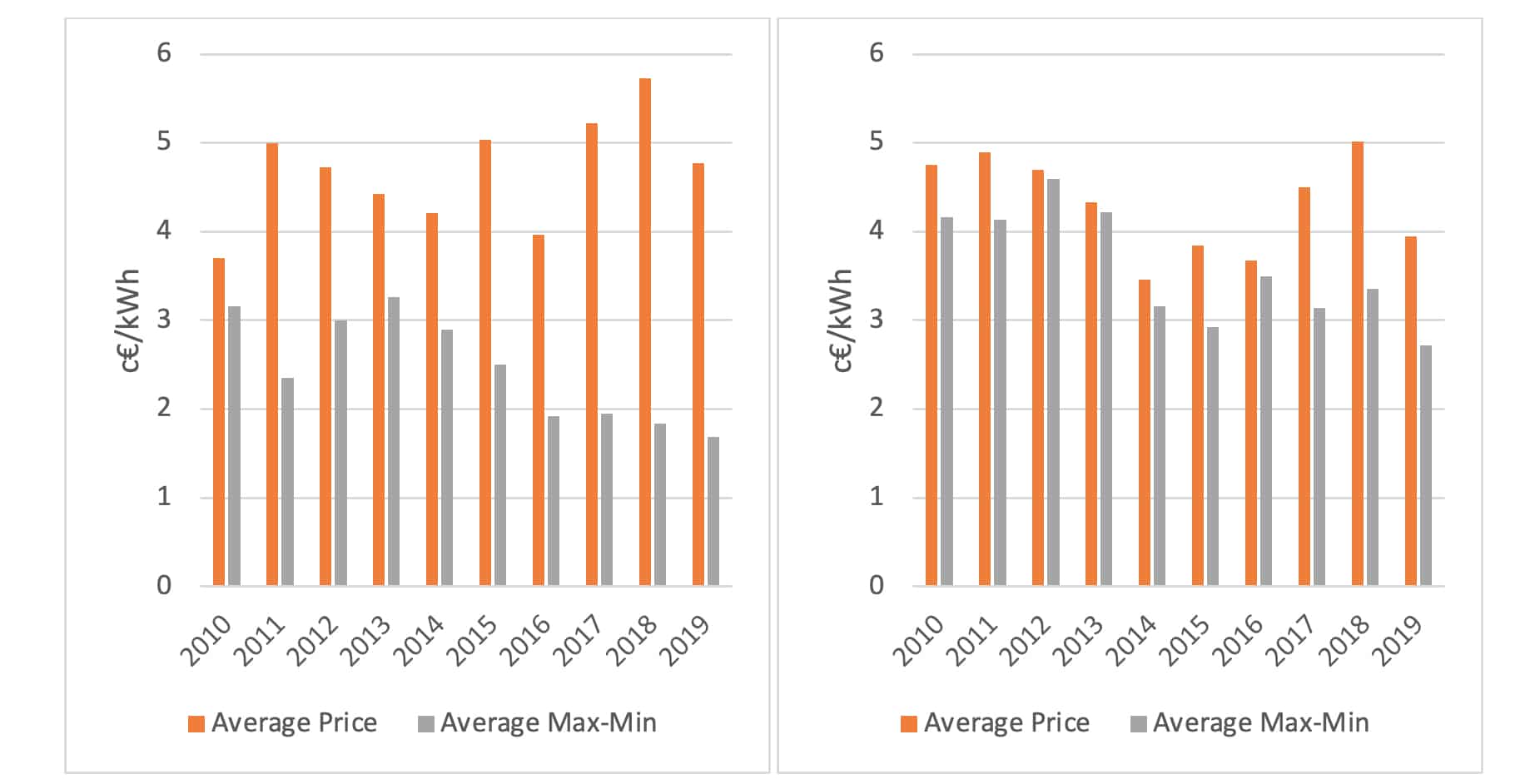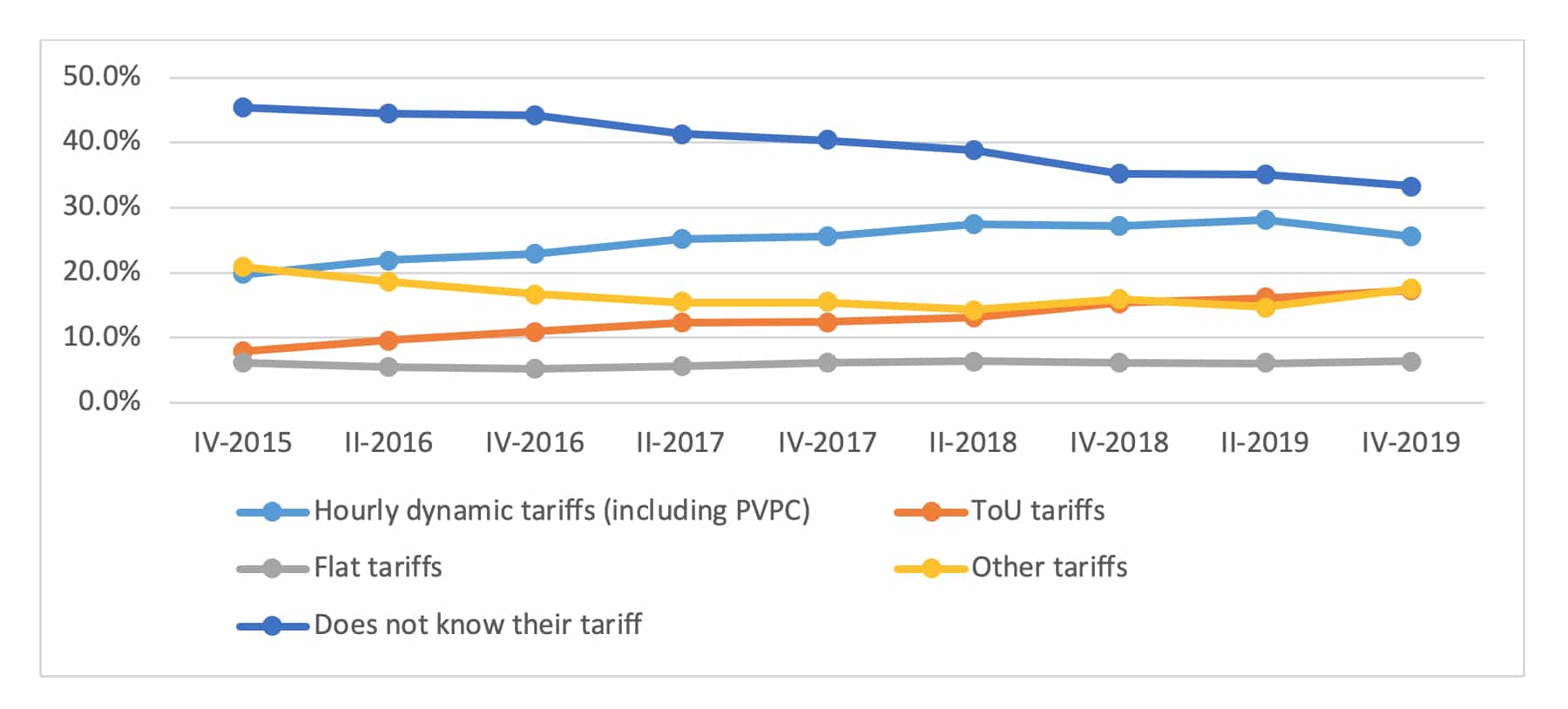The Spanish experience with dynamic tariffs
This is the 2nd installment of our November Topic of the Month with FSR Global: Unravelling the nuances of Dynamic Tariffs for electricity retail
November Topic of the Month: Unravelling the nuances of Dynamic Tariffs for electricity retail
Instalment 1: Implementing Dynamic Tariffs for Electricity Retail: Choices and Barriers
Instalment 2: The Spanish experience with dynamic tariffs
Instalment 3: The Swedish Experience with Dynamic Retail Tariffs
Instalment 4: Time of Use and Dynamic Pricing Rates in the US
In the 2nd instalment of Topic of the Month series, Unravelling the nuances of Dynamic Tariffs for electricity retail, Nicolás Morell, Jose P. Chaves and Tomás Gómez give us an overview of Dynamic Tariffs in Spain.
Dynamic Tariffs in Spain: The Context
In 2014, the Voluntary Price for Small Consumers (PVPC as for the Spanish acronym) was implemented in Spain as the regulated default tariff for small low voltage consumers (lower than 10 kW). Before 2014, the default tariffs were based on the results of quarterly energy procurement auctions, known as CESUR. The regulator invalidated the results of the last CESUR auction after determining that the competition conditions were not adequate.
Therefore, since 2014, the charge related to the energy cost in the PVPC is the hourly price of the wholesale energy markets. The energy settlement since 2018, when almost 100% of smart meter deployment was completed, is based on the smart meter actual hourly consumption. Before that date, the settlement was based on standard load profiles.
As opposite to CESUR, the PVPC resulted in savings for consumers who did not have to pay the premium of hedging from short-term market volatility. As a result, consumers are exposed to hourly price changes according to variations in the wholesale energy markets.
The PVPC provides several benefits:
- Higher transparency in price setting
- Eliminates the participation of the government in setting the energy costs of electricity
- Reduces prices for the consumer by lowering the cost of hedging
- Provides an efficient price signal, which encourages more efficient consumer behaviour.
How the PVPC is calculated?
The PVPC consists of the aggregation of the following three cost components:
- Electricity production costs set as the hourly price of the day-ahead and intraday wholesale markets including the costs of balancing and ancillary services markets.
- Network and policy costs, such as past subsidies to renewables, recovered through regulated network and policy charges, denominated in Spain “access tariffs”. There are three options for PVPC consumers to choose:
- Access tariff 2.0A: one contracted power term (€/kW) and one flat energy term (€/kWh)
- Access tariff 2.0DHA: one contracted power term and a Time-of-Use (ToU) with two energy terms differentiated by peak and off-peak hours
- Access tariff 2.0DHS: one contracted power term and a ToU with three energy terms differentiated by peak, off-peak and super-peak hours, aimed at users with electric vehicle chargers.

Figure 1 shows the energy terms of the three access tariffs. The contracted power term applied in the three access tariffs is the same (3,17 €/kW/month).
- Commercialization costs include the regulated commercialization margin and costs related to customer services. This cost was set to 4 €/kW per year and later reduced to 3.113 €/kW per year, with a variable component of around 0.2 c€/kWh. There is a claim from competitive retailers that this regulated commercialization margin is very low and difficult to compete against it.
Figure 2 shows an electricity bill breakdown for a Spanish domestic consumer.

Benefits for consumers
Under PVPC, consumers are exposed to the volatility of the electricity market and, therefore, they have the opportunity to respond to such volatility through efficient management of their consumption. Consumers are mainly exposed to two price signals to respond to:
- ToU energy charges under-regulated access tariffs. In the modalities where variability exists (2.0DHA and 2.0DHS) there is a difference of up to 6.5 c€/kWh between peak and off-peak hours (including capacity payments, 0.5 c€/kWh). A cheaper electricity bill would suppose additional savings from taxes (VAT: 21% and Electricity tax: 5%).
- The volatility of wholesale electricity markets. The hourly price differences allow active consumers to manage their consumption from the hours with high to low prices.

Figure 3 (left) shows the average price of the day-ahead hourly market in Spain for the last 10 years, as well as the average of the difference between the maximum and minimum prices in each day. As can be seen, in Spain, the average difference between the maximum and minimum daily prices has decreased in recent years from 3.25 c€/kWh in 2013 to 1.69 c€/kWh in 2019. On the other hand, as shown in Figure 3 (right), in France, the average difference between the maximum and minimum daily prices have also decreased but in a smaller proportion, from 4.2 c€/kWh in 2013 to 2.72 c€/kWh in 2019. This decreasing volatility represents decreasing potential savings for active consumers by demand shifting.
In fact, the main economic incentives for PVPC consumers to change their consumption patterns come from ToU access tariffs rather than daily market volatility.
What is the consumer’s perception?
As at the end of 2018, 11 million Spanish consumers were under the PVPC, which means 42% of the total number of consumers under 10 kW of contracted power. Switching from PVPC to free-market contracts or vice versa is allowed with no restrictions in Spain. More and more consumers are aware that changes in their consumption can lead to savings. The Household Panel[1] developed by the Spanish regulator, CNMC, shows how the number of households with hourly dynamic tariffs (including PVPC) or just with ToU tariffs has increased (Figure 4).

Data from the Household Panel shows that only 40% of consumers with hourly dynamic tariffs take into account the most expensive and cheapest hours when scheduling high-consumption electrical appliances, while in the case of consumers with ToU tariffs this percentage rises to 90%. The main reason for this discrepancy, as it has been commented, is that customer responses are more incentivized by network and policy regulated charge time differences than energy market price volatility.
More on Dynamic Tariffs
Watch the recording of the FSR Global online event: A Global View on Dynamic Tariffs or read FSR Global’s policy brief: “Dynamic retail electricity tariffs: choices and barriers”.
Interested in learning more about dynamic tariffs?
Read our policy brief:
The policy brief reviews sixteen international case studies on the implementation of dynamic retail electricity tariffs are reviewed to identify the design and implementation choices that have to be made when introducing such tariffs.
The brief highlights that before implementing dynamic tariffs, it is essential to conduct a careful cost-benefit analysis of the effects on consumers, suppliers and the overall implementation system. Moreover, enabling innovative business models and technologies will help to derive the maximum benefit from the application of dynamic tariffs.







